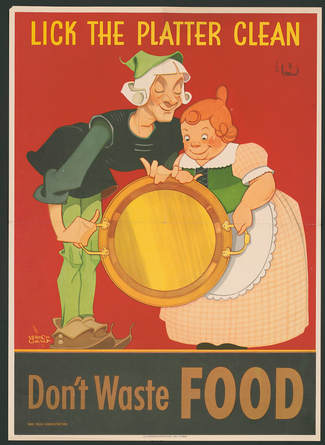 A poster, by artist Vernon Grant, issued by the U.S. War Food Administration in 1944 to discourage civilian food waste. Courtesy of the Library of Congress Prints and Photographs Division. A poster, by artist Vernon Grant, issued by the U.S. War Food Administration in 1944 to discourage civilian food waste. Courtesy of the Library of Congress Prints and Photographs Division. As we recover from our holiday feasts, David Hoefer, co-editor of The Last Resort, reflects on the meals historically available to our troops in battle. If you would like to submit a blog post for Clearing the Fog, contact us here. I’ve recently been reading Theodore Roosevelt’s book The Rough Riders about his volunteer cavalry unit that fought in Cuba during the Spanish-American War. It’s very much an adulatory view of the conflict but, beneath the pro forma sentiments, there remains plenty of interest for the historically minded. One point that comes across is the sheer difficulty of making war in modern times, regardless of the goals or objectives involved. The projection of large forces over great distances calls for sophisticated logistical systems—systems that are often assumed to exist even when they don’t. Roosevelt remarks more than once about the inadequacies of transport that confronted his men both going to and fighting at the fluid Cuban battlefront. As for the food—well, let’s just say there weren’t a lot of farm-fresh homecooked spreads. Meals consisted of hardtack and sometimes rotten meat, with nary a fruit or vegetable in sight, and shortages of coffee and sugar, too. Pud Goodlett faced similar challenges as he fought with Patton’s Third Army in Europe during the closing months of World War II. Winter weather and the Wehrmacht were the primary obstacles, of course, but maintaining adequate nourishment—or simply getting fed—would have been a major concern. The U.S. Army’s answer was the K-ration, an individually packaged lightweight meal that supplied sufficient calories for soldiers in the field, at the expense of taste, variety, and other virtues of civilized eating. To experience a K-ration meal—vicariously, of course—watch the video below. The contemporary narrator seems to have a genuine appreciation for the K-ration, which he examines in considerable detail. I wonder if Pud felt the same way, as he wolfed down the biscuits and smoked the cigarettes in some anonymous foxhole always too close to an increasingly desperate enemy?
4 Comments
Bob McWilliams
12/31/2018 06:52:56 pm
“It was a brave man who first ate an oyster” Jonathan Swift
Reply
David Hoefer
12/31/2018 07:28:56 pm
Amen. Why does all the food look so strange? Because it's moldy! But those are the risks you might be willing to take when you're already under the influence…
Reply
Timothy Cooper
1/1/2019 04:58:56 pm
David:
Reply
David Hoefer
1/2/2019 10:59:46 am
Thanks, Tim. Appreciate the comment and the sentiment. Happy New Year to you too.
Reply
Your comment will be posted after it is approved.
Leave a Reply. |
Details
Archives
June 2023
Categories
All
|


 RSS Feed
RSS Feed